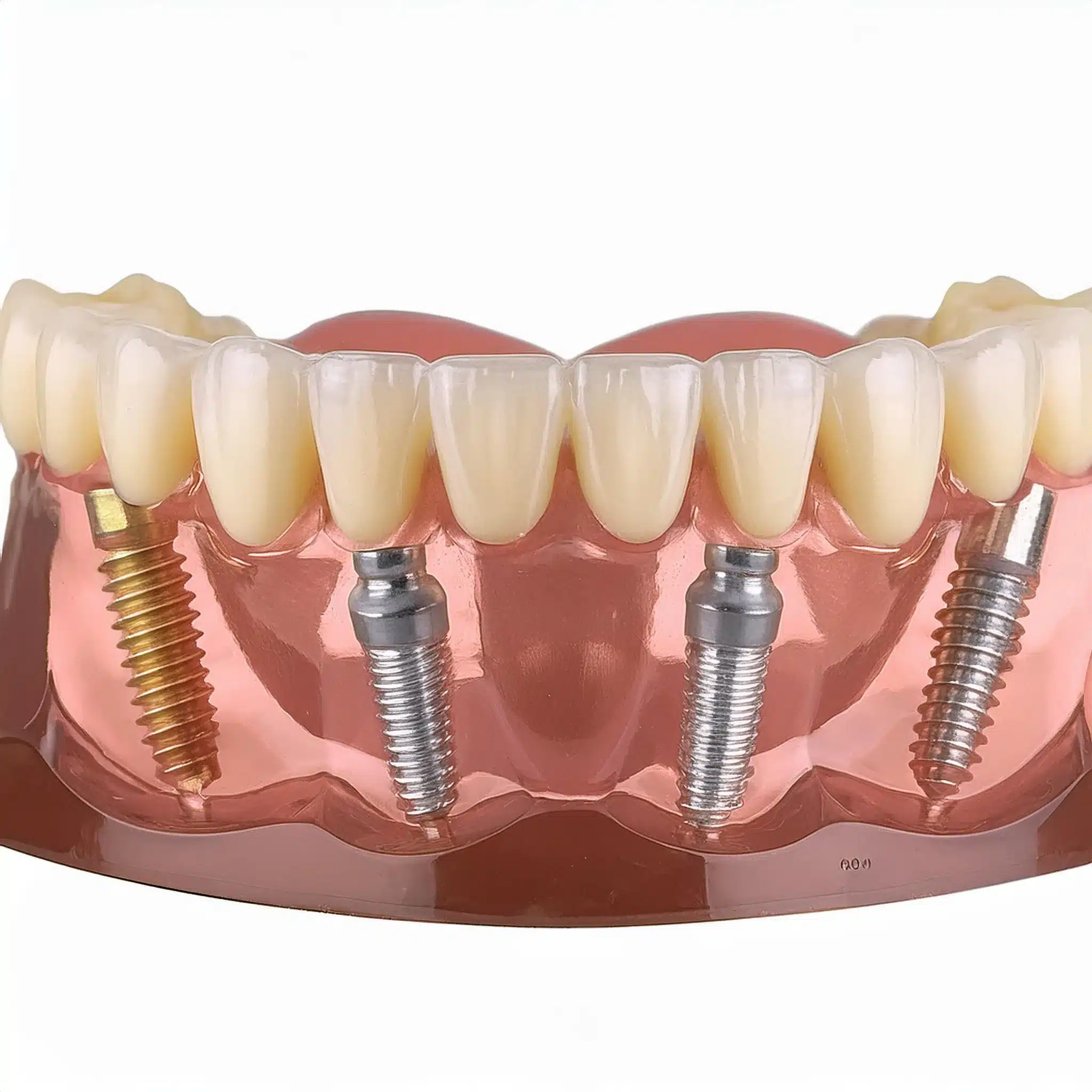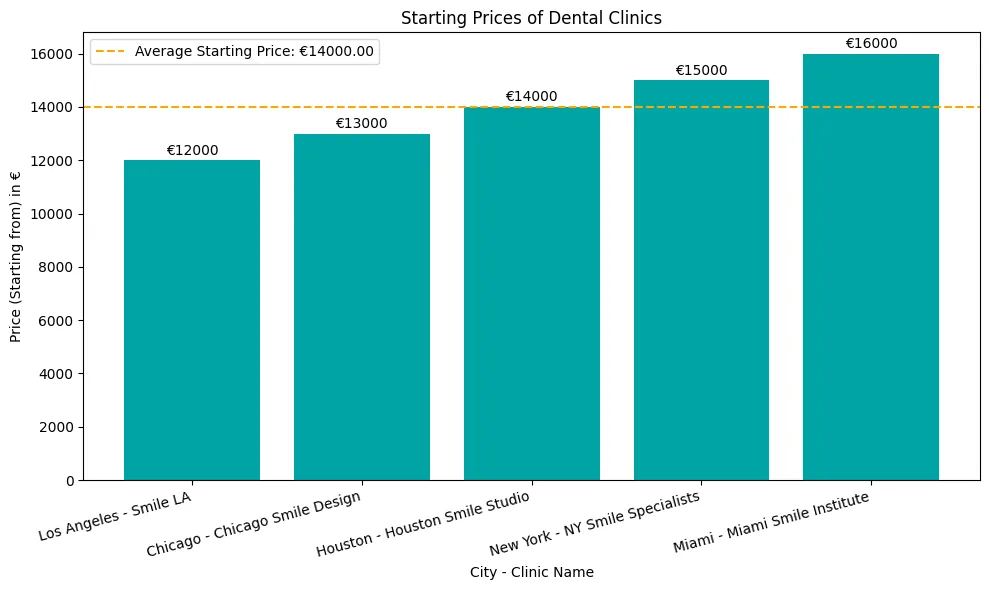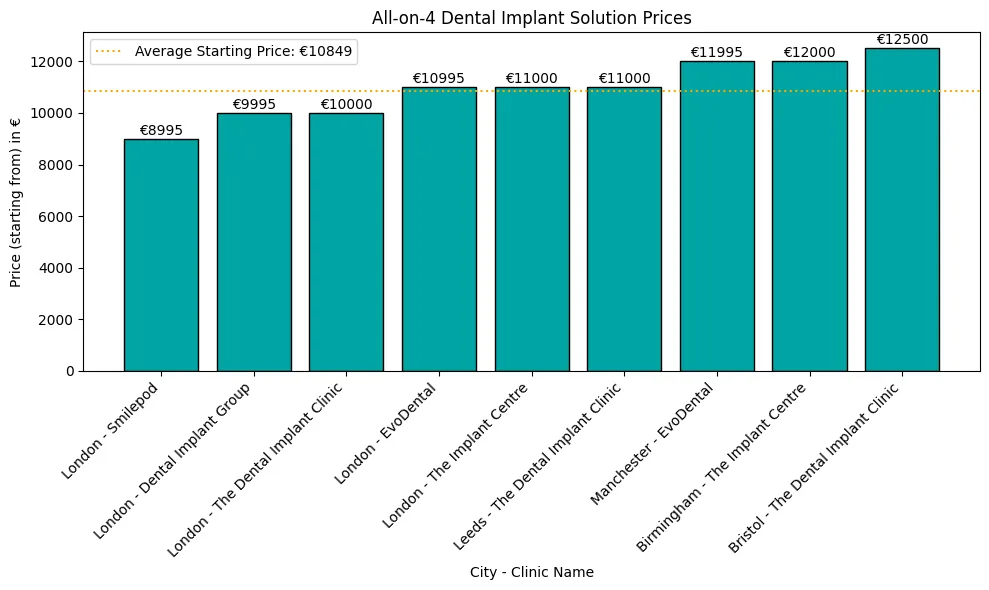Dental implant materials are key to the success and longevity of dental implants, but choosing the right one can be daunting.
Many patients wonder what’s best for durability, aesthetics, and cost.
Knowing the different materials can help you make an informed decision.
What are the different types of dental implant materials?
The different types of dental implant materials are: titanium, zirconia, and ceramic. Titanium is preferred for durability and bone integration; zirconia is a metal-free, aesthetic option; and ceramic is aesthetic but less common due to its higher cost and fragility. Titanium has a 95% success rate over 10 years; that’s how reliable.
| Material Type | Durability | Aesthetic Qualities | Cost |
|---|---|---|---|
| Titanium | High durability; corrosion resistant | Metallic color; may show through gums | Moderate to high |
| Zirconia | Strong but more brittle than titanium | Tooth-colored; highly aesthetic | High |
| Ceramic | Corrosion resistant; less strong than titanium | Natural look; matches tooth color | Higher than titanium and zirconia |
Titanium Implants: Pros and Cons
Titanium dental implants pros
High Success Rate: Titanium implants have a 95% success rate over 10 years, according to multiple studies (1).
Osseointegration: The material bonds with bone; osseointegration makes it stable and long-lasting.
Research shows titanium integrates with bone better than other materials, making it a solid base for the implant (2).
Durability: Titanium is corrosion-resistant and suitable for long-term use in the mouth.
It withstands the mechanical forces of chewing without degrading (3).
Titanium dental implants cons
Allergic Reactions: Although rare, some people may be allergic to titanium.
A small percentage of patients may be hypersensitive to titanium, which can lead to implant failure (4).
Aesthetic Limitations: Titanium implants can show through the gum, especially in the front of the mouth.
This is more noticeable when the gum tissue is thin (5).
Cost: Titanium implants are more expensive than other materials.
The cost varies widely but is often higher due to the material and the long-term benefits of the implant (6).

Zirconia Implants: Pros and Cons
Zirconia dental Implants Pros
Aesthetic: Zirconia dental implants are highly aesthetic.
They are tooth-colored and blend in with the surrounding teeth, making them perfect for visible areas (1).
Biocompatible: Zirconia is biocompatible, which reduces the risk of adverse reactions in the body.
Research shows zirconia implants have lower complication rate than other materials (2).
Strength and Durability: Modern zirconia dental implants are strong.
They can withstand heavy chewing forces without breaking or chipping, as strong as titanium (3).
Zirconia implants cons
- Brittleness: Although strong, zirconia implants are more brittle than titanium.
They can fracture under extreme stress, which can be a limitation for some patients (4). - Limited Long-Term Data: Zirconia implants are a newer technology than titanium.
As such, long-term data on success rate is limited.
Current research shows a comparable success rate to titanium, but more research is needed to conclude (5). - Cost: Zirconia implants are more expensive than titanium.
The higher cost is due to the technology and material quality, which may be a consideration for budget patients (6).

Ceramic implants: pros and cons
Ceramic dental implant Pros
Aesthetic: Ceramic implants are famous for their natural look.
They are designed to match the colour of natural teeth, perfect for front teeth (1).
Biocompatible: Ceramic implants are biocompatible.
Less likely to cause allergic reactions or sensitivities compared to metals.
Research shows they have lower incidence of peri-implantitis than titanium implants (2).
Corrosion-resistant: Ceramic implants are corrosion-resistant and wear-resistant.
Unlike metal implants, they don’t degrade over time or react with substances in the mouth; they remain intact (3).
Ceramic Implants Cons
Cost: Ceramic implants are more expensive than titanium and zirconia implants.
The manufacturing process and material costs contribute to the higher price (4).
Mechanical Strength: Although ceramic implants are strong, they are not as strong as titanium implants.
They can chip or fracture under extreme stress, especially in the back of the mouth, where the forces are greater (5).
Availability and Longevity: Ceramic implants are less available than titanium options and long-term data is still being gathered.
Some research shows they may have higher failure rate than titanium but the difference is minimal (6).
| Characteristic | Description | Comparison to Other Materials |
|---|---|---|
| Aesthetic Appeal | Ceramic implants are highly aesthetic, designed to match the color of natural teeth, making them ideal for front teeth. | Superior to titanium in aesthetics; comparable to zirconia in natural appearance. |
| Biocompatibility | Ceramic implants are biocompatible, reducing the risk of allergic reactions or sensitivities compared to metals. | Comparable to zirconia in biocompatibility; superior to titanium in reducing allergic reactions. |
| Corrosion Resistance | Ceramic implants are corrosion resistant and wear resistant, maintaining their integrity over time. | Comparable to titanium and zirconia in corrosion resistance; superior in wear resistance. |
Factors to Consider when Choosing Dental Implant Materials
Choosing the right dental implant material involves considering aesthetics, durability, biocompatibility, and cost.
While many dental implant brands offer various material options, here’s how to decide:
1. Aesthetic Needs:
Ceramic implants are best for patients who need high aesthetic results, especially for front teeth.
They match the colour of natural teeth and are the top choice for visible areas (1).
Titanium implants are functional and strong, but less aesthetic due to the metallic colour.
Used where aesthetics are secondary to durability (2).
- 2.Durability and Strength:
Titanium Implants: Known for their mechanical strength, titanium implants are suitable for high-force areas.
They have a long history of success and are fracture- and breakage-resistant (3).
Zirconia Implants: Good balance of strength and aesthetics, but not as robust as titanium.
Less likely to fail under normal use but more prone to damage under excessive stress (4).
3. Biocompatibility:
Ceramic implants are highly biocompatible and less likely to cause allergic reactions or inflammatory responses compared to metals.
Suitable for patients with metal sensitivity (5).
Titanium implants are generally biocompatible but may cause allergic reactions in sensitive individuals. Used extensively and proven track record (6).

- 4. Cost Considerations:
Ceramic implants are typically more expensive due to the advanced materials and manufacturing processes.Costs can be up to 30% higher than titanium implants (4).
Titanium implants are generally more affordable and widely available.They offer a cost-effective solution with high durability (3).
5. Long-Term Success Rates:
Titanium Implants: Proven long-term success with a survival rate of approximately 95% over 10 years (8).
Ideal for patients seeking a reliable and long-lasting solution.
Ceramic Implants: Success rates are slightly lower but still competitive.
Long-term data is growing, showing promising results with a survival rate of around 90% over 5 years (7).

Conclusion & Key-Takeaways
Key Takeaways:
Titanium Implants: Renowned for their strength and durability, titanium implants offer a high survival rate and reliable osseointegration.
They remain the gold standard due to their established track record in various clinical scenarios.
Zirconia Implants: Best for patients seeking superior aesthetics, zirconia implants provide a natural look and high biocompatibility.
They are an excellent choice for those concerned about the visual appeal of their dental work.
Ceramic Implants: Balancing strength and flexibility, ceramic implants are ideal for those needing a cost-effective yet durable solution.
They offer long-term benefits despite their higher initial cost.
Conclusion: Selecting the right dental implant material depends on your specific needs, including aesthetic preferences, durability, and budget.
When considering the best dental implant material, it’s also important to look at the dental implant’s best brands.
Each material—titanium, zirconia, and ceramic—has its own unique advantages and ideal applications.
By considering the key factors outlined, you can make an informed decision that aligns with your dental health goals and personal preferences.

FAQ
References
Albrektsson T, Berglundh T. Systematic review of dental implants. J Periodontol. 2017;88:443–464.
Article: Systematic review of dental implants
Aghaloo TL, Moy PK. Current concepts in dental implants. J Dent Res. 2017;96:275-282.
Article: Current concepts in dental implants
Zix J, Schmidlin PR, Hämmerle CHF, et al. A systematic review of dental implants and their materials. Clin Oral Implants Res. 2020;31:100–114.
Article: A systematic review of dental implants and their materials
Jansen JA, Tenenbaum HC, Horwitz J. The role of implant material in dental implant success: A comprehensive review. J Oral Implantol. 2020;46:12–23.
Article: The role of implant material in dental implant success
Pjetursson BE, Tan WC, Thoma DS, et al. A systematic review of the success of zirconia implants. J Dent. 2019;85:1-10.
Article: A systematic review of the success of zirconia implants
Lu X, Zhao L, and Yang X. Ceramic implants in dental practice: An overview. J Clin Periodontol. 2021;48:667–681.
Article: Ceramic implants in dental practice
Kaur M, Al-Quran F, Al-Khalifa K, et al. Comparison of titanium and zirconia implants: A review. J Prosthet Dent. 2020;124:591-598.
Article: Comparison of titanium and zirconia implants
Wang H, Li Y, and Liu X. Factors affecting dental implant materials: A systematic review. J Biomed Mater Res B Appl Biomater. 2020;108:1974-1984.
Article: Factors affecting dental implant materials




